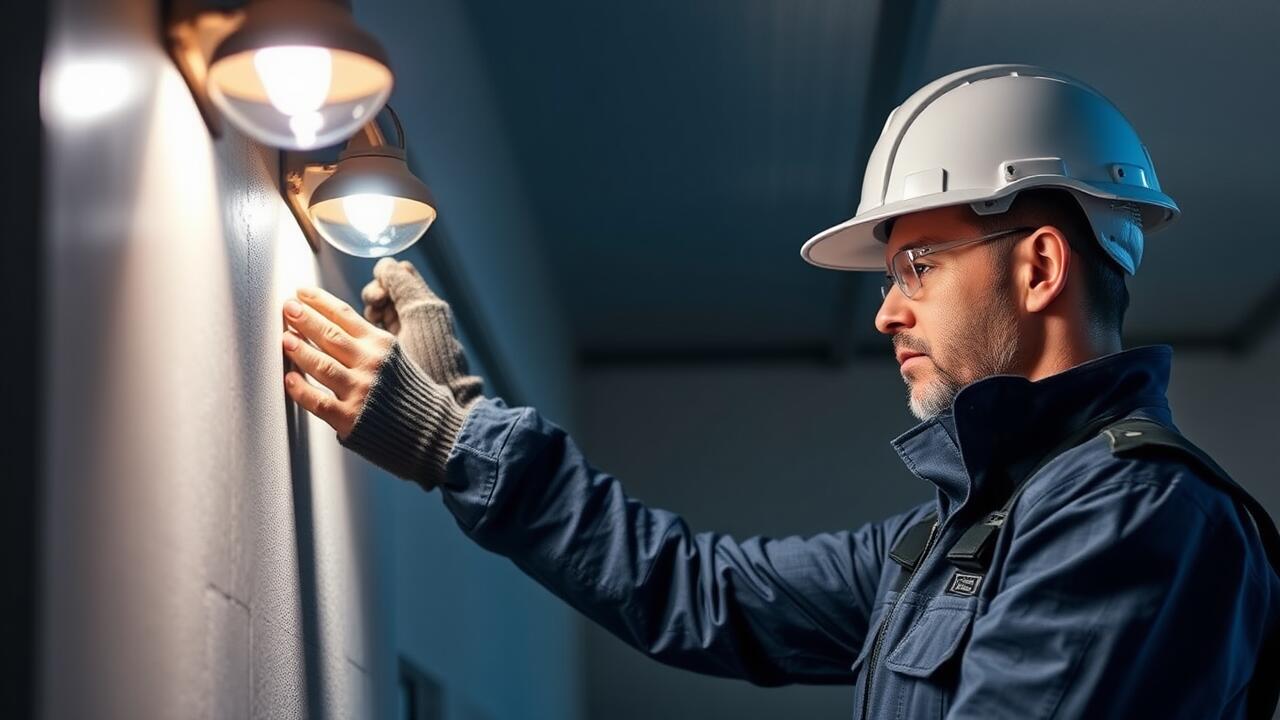
Installing Lights at Incorrect Heights
Installing lights at incorrect heights can lead to various issues, affecting both functionality and aesthetic appeal. Fixtures mounted too high may not provide adequate illumination for tasks or activities, while those set too low can become obstructions or cause discomfort. In residential settings, achieving the right balance is crucial for creating an inviting atmosphere. Proper height placement is essential, especially in spaces like kitchens or reading areas.
Another common oversight is neglecting the impact of ceiling height on fixture installation. In homes with high ceilings, using fixtures designed for lower installations can create an awkward visual effect and result in insufficient light distribution. A well-planned Lighting Installation Gulfton, Houston approach considers both the function and design, ensuring that each fixture complements the space and meets practical needs. Taking into account the intended use of each area helps in determining the optimal height for light fixtures, greatly enhancing overall living experience.
Determining Optimal Fixture Placement
Optimal fixture placement is crucial in achieving effective and aesthetically pleasing lighting in any residential space. Factors such as room size, function, and layout should guide the positioning of lights. General guidelines suggest that wall-mounted fixtures should be placed approximately 60 to 66 inches from the floor, while recessed lighting should be spaced about 4 to 6 feet apart. In spaces like kitchens and dining areas, task lighting should be positioned to illuminate work surfaces directly without causing glare.
When considering fixture placement, remember the importance of layering your lighting design. Ambient, task, and accent lights can enhance functionality while creating a warm atmosphere. For residents seeking professional assistance, Lighting Installation Gulfton, Houston, offers expertise in strategizing fixture arrangements that meet both style and practical needs. Ensuring each type of lighting is well-placed can significantly improve the overall experience of any living area.
Failing to Account for Energy Efficiency
Many homeowners overlook the importance of energy efficiency when planning their lighting installation projects. Selecting fixtures without considering their energy consumption can lead to higher utility bills and a larger carbon footprint. The advantages of choosing energy-efficient options extend beyond immediate savings. Efficient lighting solutions contribute to long-term sustainability and reduce the overall environmental impact of a household.
Understanding energy ratings and costs is essential in making informed choices. Fixtures with good energy ratings will use less electricity while providing adequate illumination. Homeowners in Montrose, Houston, should prioritize LED bulbs and Energy Star-rated products when embarking on their lighting installation. This thoughtful approach not only enhances the living environment but also aligns with modern sustainability practices.
Understanding Energy Ratings and Costs
When considering energy efficiency in residential lighting, understanding energy ratings is essential. Energy ratings provide important insights into how much electricity fixtures use and their overall efficiency. Choosing lights with higher energy ratings can lead to significant cost savings on electricity bills over time. In regions like Gulfton, Houston, where energy costs may fluctuate, making informed decisions about lighting can greatly impact household budgets.
Additionally, homeowners should be aware of the initial costs versus long-term savings associated with various lighting options. High-efficiency LEDs, for instance, might have a higher upfront cost but can reduce energy consumption significantly. It's crucial to evaluate not just the price of the fixtures but also their operational costs over time, especially during lighting installation in Gulfton, Houston. This approach helps in recognizing the true value of investing in energy-efficient solutions for residential spaces.
Neglecting Wiring Considerations
Wiring considerations play a crucial role in the overall safety and functionality of a lighting system. Many homeowners overlook this aspect, often assuming existing wiring will suffice for their new lighting fixtures. It is essential to assess the condition and capacity of current wiring, especially in older homes. Not doing so can lead to overloaded circuits, flickering lights, or even fire hazards. For anyone embarking on a lighting project, understanding the specifications and requirements of different fixtures can prevent serious issues down the line.
In areas like Gulfton, Houston, where older electrical infrastructure might exist, ensuring proper wiring is even more critical. Homeowners should consult experts familiar with local electrical codes and standards. Professional input can help determine whether upgrades are needed to support modern lighting technologies such as LED fixtures. Investing in a thorough examination of wiring before installation not only enhances safety but also promotes energy efficiency throughout the home.
Ensuring Safe and Compliant Installations
Ensuring safe and compliant installations is a fundamental aspect of residential lighting projects. Adhering to local building codes and electrical standards can prevent hazardous conditions. Proper use of materials and techniques during installation reduces risks associated with electrical malfunctions. Hiring licensed electricians can provide assurance that all work meets regulatory requirements, particularly in complex scenarios. Keeping safety as a priority helps create a comfortable and secure environment within the home.
In areas like Lighting Installation Gulfton, Houston, understanding local regulations becomes even more crucial. Different regions may have specific requirements based on local climate or community guidelines. Homeowners should prioritize research to familiarize themselves with these standards before beginning any installation. This proactive approach minimizes costly adjustments and ensures that the installation process runs smoothly while keeping safety at the forefront.
FAQS
What are the consequences of installing lights at incorrect heights?
Installing lights at incorrect heights can lead to inadequate illumination, create harsh shadows or glare, and may not provide the desired ambiance, compromising both functionality and aesthetics.
How can I determine the optimal placement for my light fixtures?
To determine optimal fixture placement, consider the room's size, shape, and purpose, as well as the type of lighting needed (ambient, task, or accent). Experimenting with different positions and using a light meter can help ensure even distribution of light.
Why is energy efficiency important when choosing lighting fixtures?
Energy efficiency is important because it reduces electricity bills, minimizes environmental impact, and contributes to longer-lasting lighting solutions. Choosing energy-efficient fixtures can significantly lower your energy consumption over time.
What do energy ratings on light fixtures indicate?
Energy ratings on light fixtures indicate their energy consumption compared to the amount of light they produce. Higher ratings generally mean better efficiency, helping consumers make informed decisions regarding both performance and cost.
What should I consider regarding wiring when installing residential lighting?
When installing residential lighting, you should consider the electrical load, the compatibility of fixtures with existing wiring, and compliance with local electrical codes. It's advisable to consult a licensed electrician to ensure safety and proper installation.




